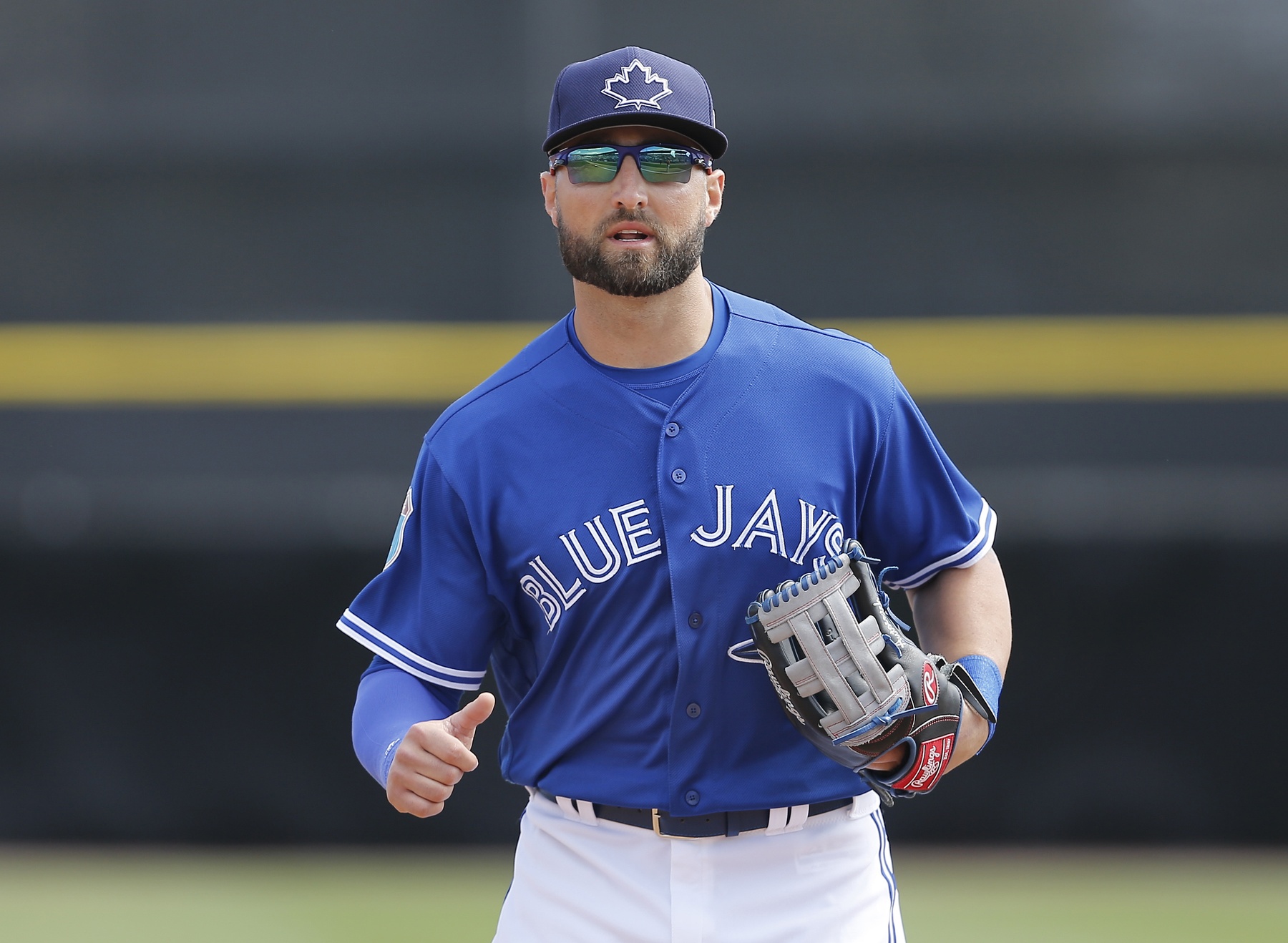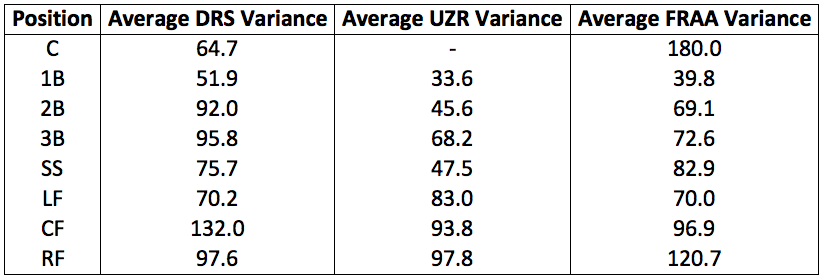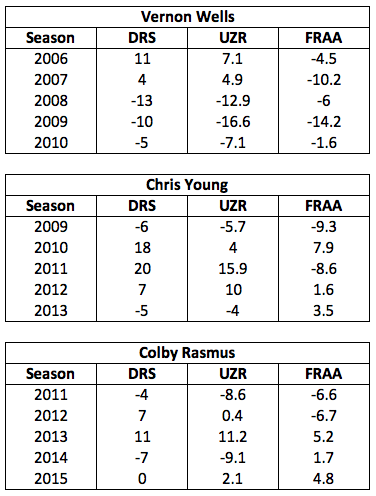Last Friday, it became all but official: Dalton Pompey is not going to be in the Blue Jays’ outfield on opening day. This is the reality now that Pompey has been sent down to minor league camp. Granted, it was never a likely possibility…save for the one day where we thought that Michael Saunders would be an Angel. Nevertheless, I’ve held on to the last shred of hope that it might happen. The reason? I have a somewhat irrational love for Dalton Pompey; a love that’s only been strengthened by my distaste for his competition.
Now, don’t get me wrong. Despite the title, and the last sentence of the previous paragraph, I don’t really hate Kevin Pillar. Far from it, actually. He’s outspoken, he’s fiery, and he’s everything that you’d want in order to make an outfielder exciting. However, he’s also a player who neither scouts nor sabermetrics saw succeeding. Pillar’s ‘success’ has been immediately accepted, with not enough thought given to the likelihood of its continuance, and that’s frustrating.
To start, let’s get one fact out of the way. In 2015, Kevin Pillar was incredibly good. By WARP he was worth 3.8 wins, by fWAR it was 4.3, and by rWAR it was 5.2 (11th best among AL hitters). And as you almost certainly already know, the bulk of that valuation comes from Pillar’s defense – the kind of defense that led to catches like this, this, and definitely this. However, what you may not know is that Kevin Pillar’s glove work wasn’t always so highly touted. There was a reason why he started the beginning of last season in left field, and it wasn’t just because superstar CF prospect Dalton Pompey was already in the major leagues.
Prior to 2015, Kevin Pillar didn’t project as even an average centerfielder; he was a tweener. For those of you unaware, ‘tweener’ is the prospect term for a player who doesn’t have the glove for centre field or the bat for a corner outfield spot. That tag was the reason Pillar was left off of every Blue Jays prospect list for which he could have been eligible. The prospect hounds weren’t alone in their assessment either. As a minor leaguer, the Jays had Pillar play 225 games in the two corner outfield spots, while only slotting him in for 165 games in center. No one saw last season coming from Kevin Pillar, save for maybe Pillar himself.
To say that people have done a 180 on Kevin Pillar, for this season, might be an understatement. In one short year, he has gone from someone who wouldn’t have made the Opening Day roster without a freak Michael Saunders injury to an accepted defensive superstar and the likely leadoff hitter. I’m not going to get in to the leadoff question here, as that’s a separate issue altogether. However, what I will tackle the notion that Kevin Pillar is a defensive stalwart.
In 2015, FRAA, BP’s defensive metric, rated Pillar as being 13 runs above average. On the contextual scale, that makes him roughly a gold glove calibre outfielder. However, for 2016, PECOTA projects him for only five runs above average; those numbers would still be decent, but a far cry from last year’s success. To me, that seems like a fair estimate, but to the general Jays populous, it seems like there would be some contention. They’d ask, “what warrants such a large reduction in projected defensive output?” For one, there’s the earlier issue of the unprecedented nature of Pillar’s breakout. Between 2013 and 2014, he posted just a 0.8 FRAA over 89 games. Of course, we also saw all of the ridiculous catches that he made last season, and people will have a hard time believing he can’t do that again. Well, he can do it again, but Pillar’s highlight reel catches are actually more of a negative for repeatability of performance, not a positive.
The way that advanced defensive metrics work is that they award a player value for making an out from a position that the average player at that position wouldn’t. Therefore, every time that Pillar made a diving catch, he added a very big boost to his defensive value totals. The problem is that those diving catches aren’t necessarily repeatable. If you were to play out those scenarios thousands of times, he might get near the ball many times, but only catch it a few times. They are just that difficult. And in terms of defensive value, while getting near a hard to reach ball is impressive, it doesn’t help the stats.
In theory, the fact that diving catches in center field are hard to repeat, in addition to a few other tropes of the position, would lead one to believe that a center fielder’s defensive value would fluctuate more from year to year. To test this, I compiled all player seasons since 2003 (that’s as far back as modern defensive stats go), and calculated the variance in defensive value over time for individual players at each position that they have played. I then took the average of those variances, to get an average defensive value variance for each position. Here is the resulting table, with variance calculated for each of DRS, UZR, and FRAA.
CF is the third highest variance position by FRAA, the second highest by UZR, and the highest by DRS. What this means is that a center fielder’s year to year defensive value is more likely to fluctuate than players in other positions. That conclusion falls in line with the thinking that they have the opportunity to make a lot of low percentage plays, and can disproportionately inflate their value by making more of those plays than expected. With that said, their isn’t a huge difference between center fielder’s variance and that of one of the less variable positions. So, this should be taken with a grain of salt.
Then again, there are also are also quite a few anecdotes that seem to further indicate that we should be skeptical of unprecedented defensive performances in CF. Three particularly interesting examples are Vernon Wells, Chris Young, and Colby Rasmus. Here are their defensive metrics over a few interesting five year swings.
In each case, in some years the players were gold glove calibre, while in others they were awful. What gives? More than anything, it gives credence to the idea that one should use at least three years of data for evaluative purposes. For Pillar, that should leave us with the conclusion that he probably isn’t as good as last year’s numbers show, and that it’s even possible he’s a negative defender this season. Defense is just that hard to evaluate.
In the end, Pillar probably isn’t as good as we give him credit for now, but he also wasn’t as bad as we credited him for previously. As a fan who likes the statistical side of the game, I like validation. I like that when the numbers say a player should perform a particular way, that he does in fact perform that way. Kevin Pillar is everything but validating, and that’s why I love to hate him. Not because he’s a bad person, or a bad baseballer; he’s actually remarkably great in both of those categories. Instead, it is because he defies numerical convention. He’s a 32nd round draft pick who didn’t have the traditional power or fielding tools to succeed, but, whether it has been in the minors or majors, has always found a way. Even this offseason, when no one expected any more of him offensively, he started working on a new swing with Bobby Tewksbary. He’s parlayed that hard work in to a legitimate shot at the leadoff role, and there’s a lot of people who think that he won’t disappoint. The numerical convention is with the people, but Pillar never does follow convention. To me, and to others, that makes him a frustrating player to have. However, as long Kevin Pillar is bucking the trend for the Blue Jays, he’s good in my books.
Lead Photo: Reinhold Matay-USA TODAY Sports



I was not one of the guys disappointed last year when Pompey was demoted. I wanted Pompey and Kevin Pillar in a platoon situation as Pillar hit better against left handed pitching and Pompey hit better against right handed pitching. I had followed Pillar from Lansing and knew he could hit. I also felt the same way about Goins. I was criticized for my opinion on both. Good to see Pillar took the position and had a great year.
Matt just learn to trust your eyes,
I know you love the stats I have tracking the size of my last five craps the problem is its still s%#t. Baseball has always about numbers now there are now numbers some say better numbers.
I say if you love numbers great I worked with numbers guys for twenty years programers and accountants who some times were good at doing what you told them to do.
How do quantify 5 top hitters on a team like the Jays who are comfortable with each number spend time sharing their thoughts on hitting.
Loving numbers is just as dumb as loving a hitter who has 35 homers over a year and has a 35 for a RBI total.
Pillar was great defensively in 2013 and 2014(limited sample) which I think shouldn’t be discounted. Sure, he might not be a plus 15 run defender but I think its crazy to say he will might be a negative defender this season.